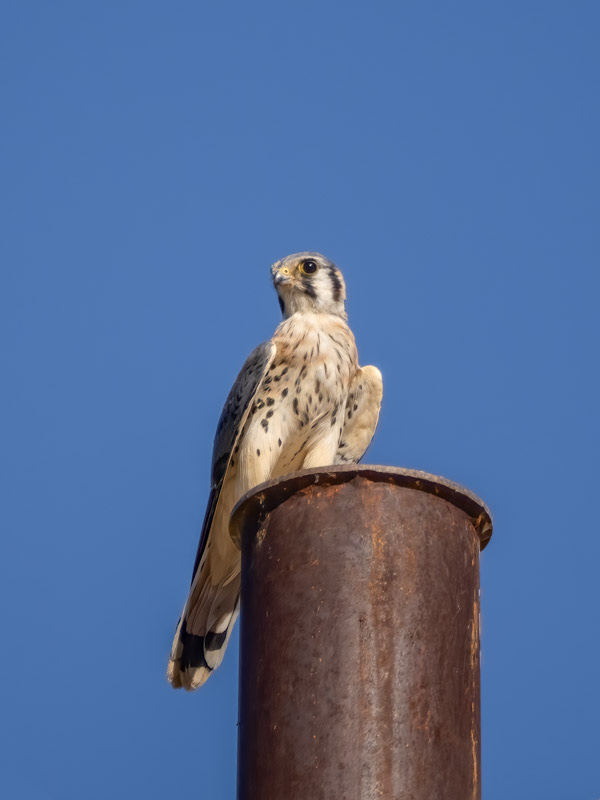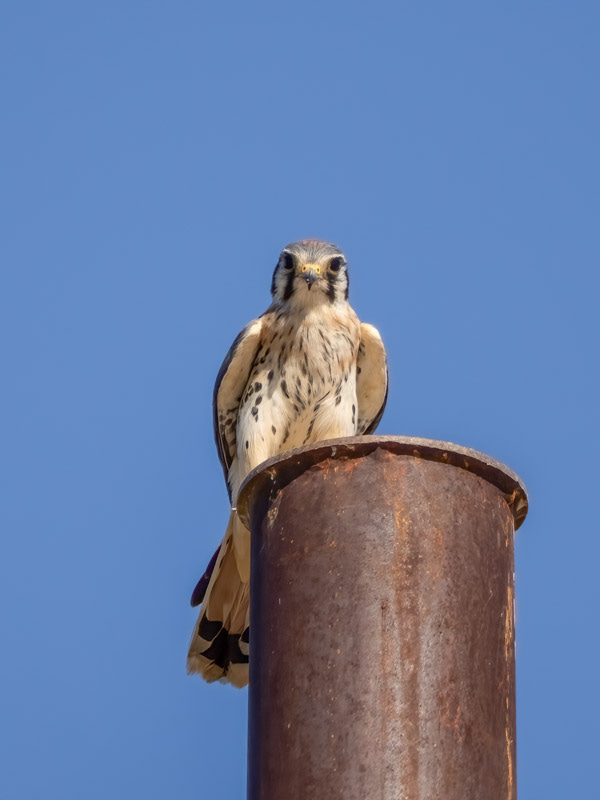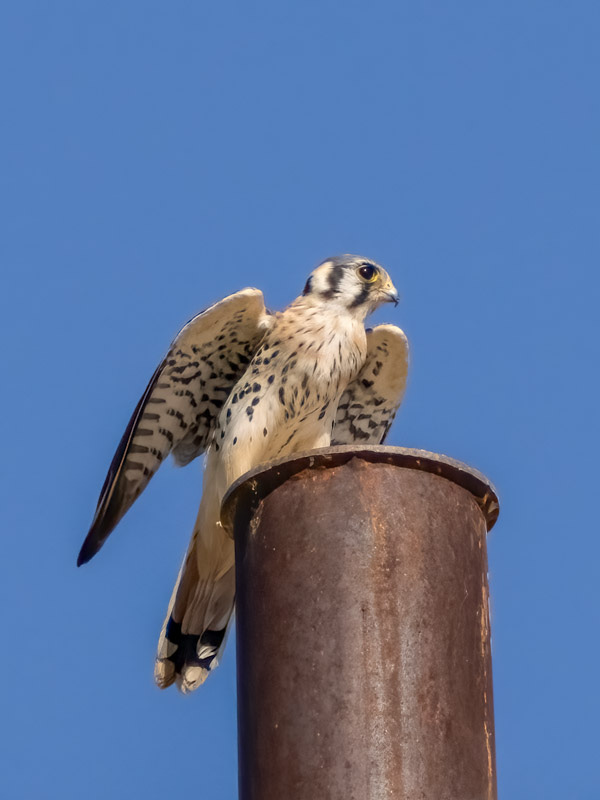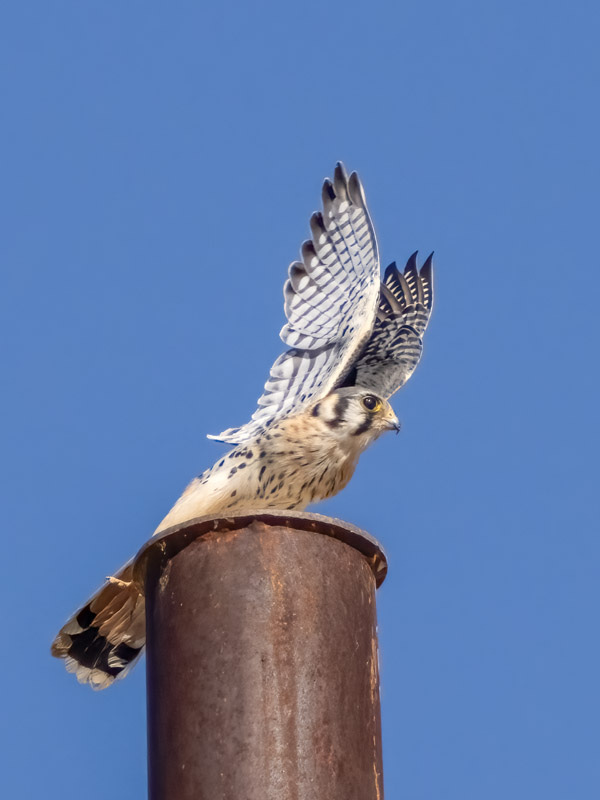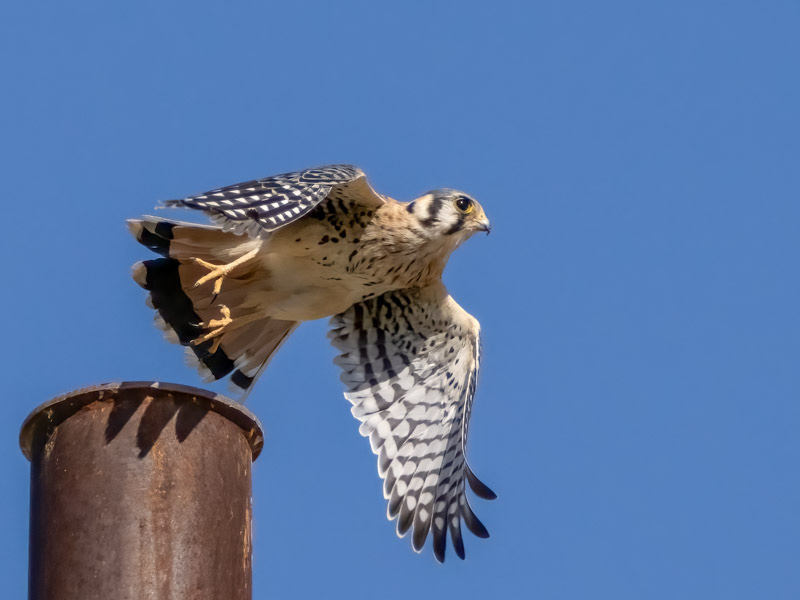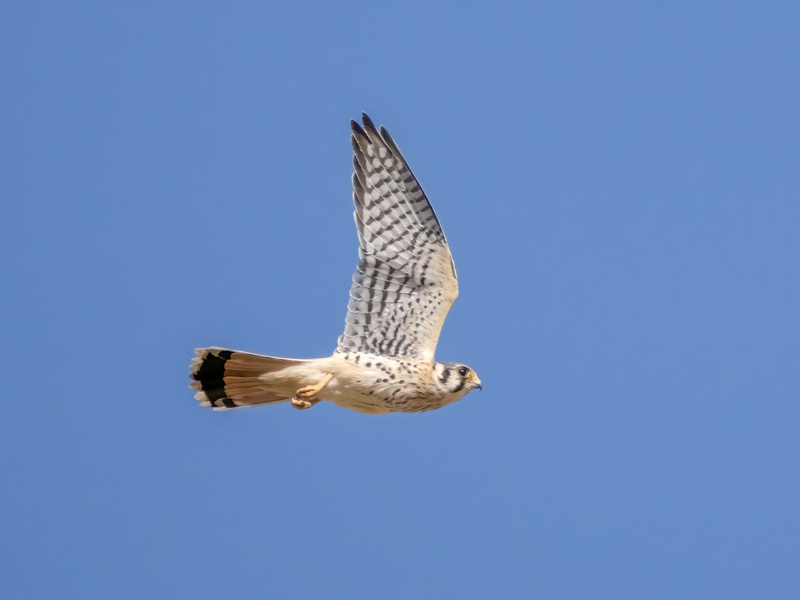Jump Shot of a Falcon
Oct. 19, 2024: An American Kestrel in farmland
Two weeks ago I drove to the farm fields north of Marana. I was itching to get out and I wanted to see how my knee would do on a somewhat long car ride. Turns out my knee was not very happy being in one position in the car for so long. After a little over an hour I knew I needed to turn around and go back home, but then I saw an American Kestrel on a tall pole overlooking a farm field. I pulled over and waited, hoping to get photos of it taking off.
American Kestrels are the smallest of the falcons in North America. The spotting on this bird's chest and the blue wings (visible in the photo above) lets us know this is a male American Kestrel. He definitely was aware of my car stopping, but I never stepped out of the car and the Kestrel seemed unconcerned. It was a hot morning and the Kestrel was holding its wings to the side to aid in cooling. For more on this species, Ned Harris created a post on American Kestrels for the Sabino Canyon Volunteer Naturalists: https://sabinonaturalists.org/critters/american-kestrel/
Larger raptors often give some kind of cue they are going to take off. Kestrels don't really do that. They go from 'perched' to 'flight' in an instant. I kept my finger on the shutter and waited and waited and waited. Suddenly, he took off!
In this sequence you can see that the Kestrel's eyes remained focused on something. Its prey might have been an insect or a rodent in the nearby fields, and the Kestrel was off on its hunt.
This photo is what my friend Marty calls the "jump-shot". The kestrel has its legs extended from the push, its narrow pointed wings are fully extended and the bird is powering off of its perch.
The downward swoop of its wings gave it loft. You can see the detail of the Kestrel's tail now. It is squared at the end and male Kestrels have a thick black band at the end of the tail, with the tail feathers tipped in white.
A quickening wing beat shows the Kestrels long narrow wings, typical of falcons. For more on the American Kestrel, Birdnote has a nice piece on this "Tiny Killer Built for Speed" :https://www.audubon.org/news/the-american-kestrel-tiny-killer-built-speed
The Kestrel crossed the road in front of me, flew towards a fallow field and then turned and dropped onto the ground. I did not see it catch anything or eat anything. It might have and perhaps I missed it.
The Kestrel quickly became airborne again soon after it landed. It flew back towards me and then beyond the pole to a perch on the power line near the next pole. Again, it remained alert looking for prey.
We have American Kestrels year-round in the Tucson area. During the winter, the numbers of Kestrels in our area increase thanks to Kestrels migrating south for the winter. I am certain I'll be seeing more of these special falcons over the next few months.


